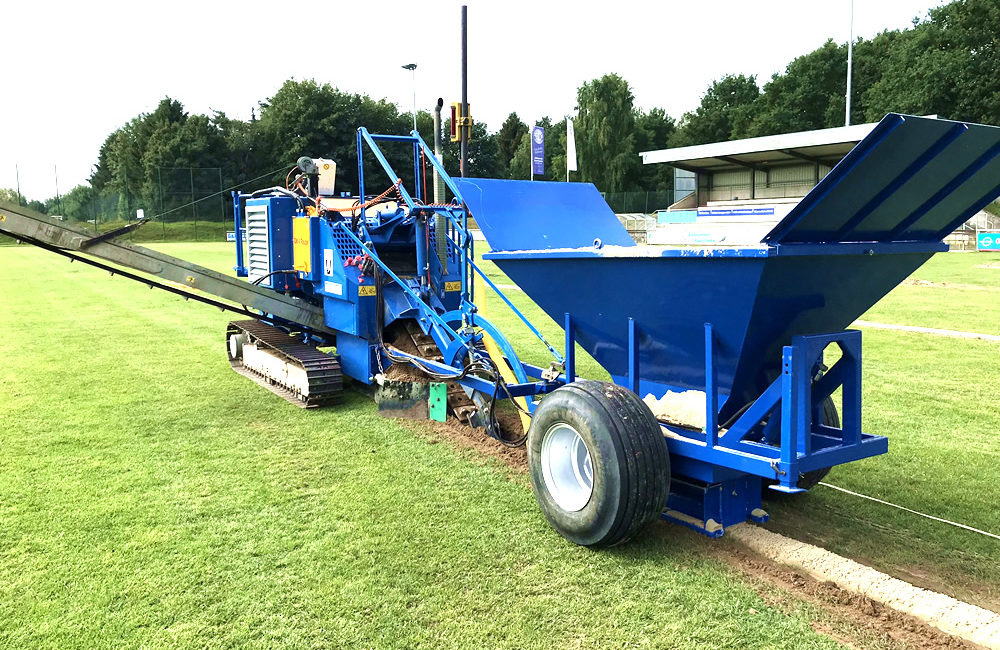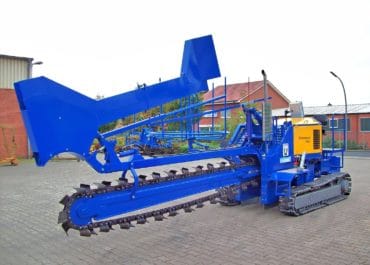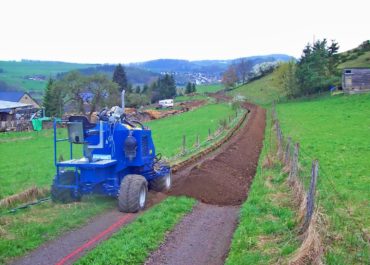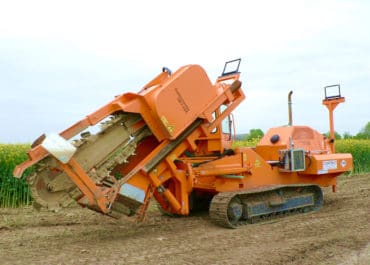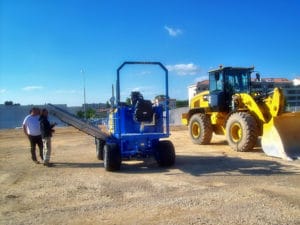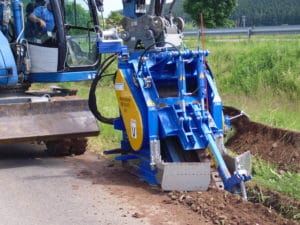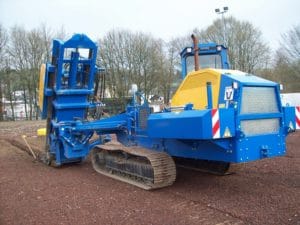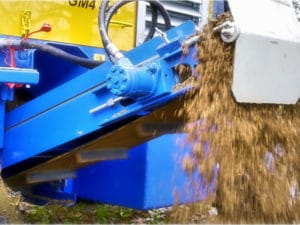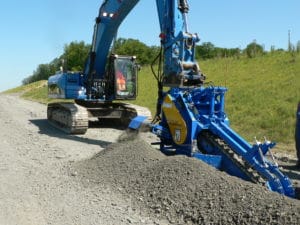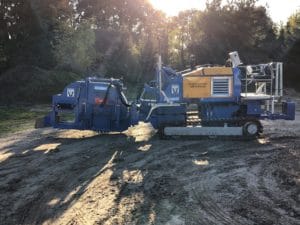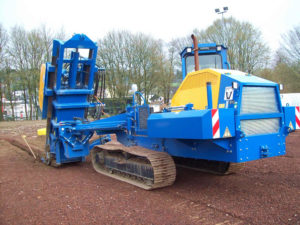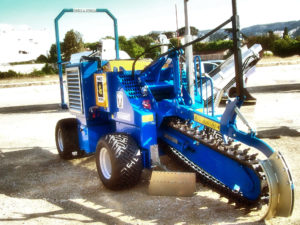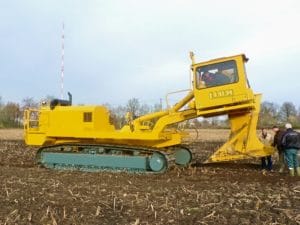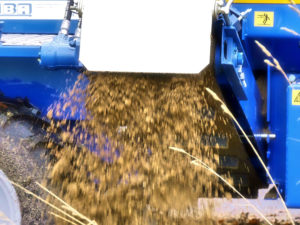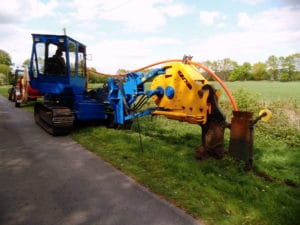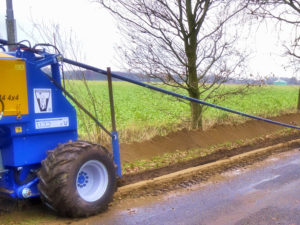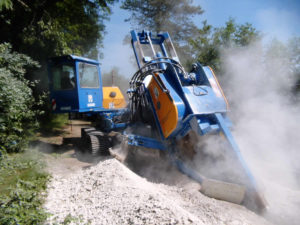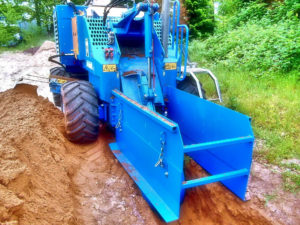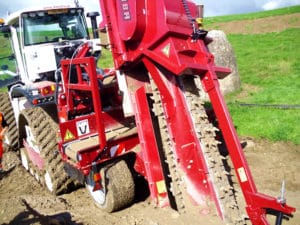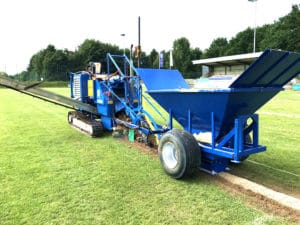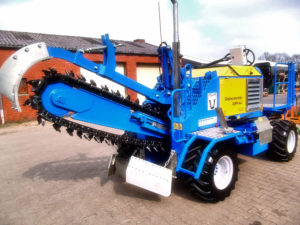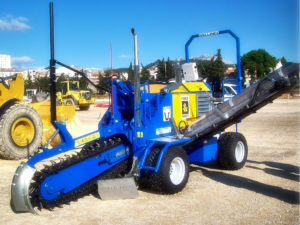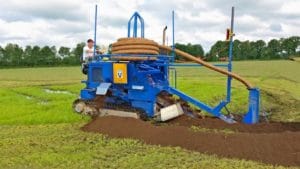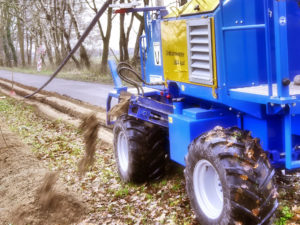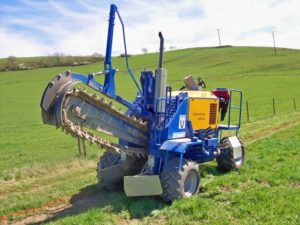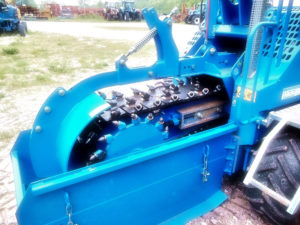Laying cables in the ground with the GM4 crawler
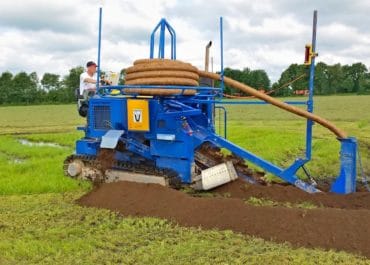
When creating trenches for irrigation systems, drains and underground cables, trench cutters for laying cables in the ground are the first choice. LIBA has different trenchers in its programme, which convince with their all-terrain and powerful caterpillar drive, a user-friendly control system and the extremely robust construction.
The small but powerful GM 4 caterpillar for laying cables in the ground has clear operating elements and is therefore suitable for quick familiarisation, as its mode of operation is immediately apparent from the very first use.
Trench cutters for cable laying in the Ground
Digging trenches for cable laying in the ground is often a tricky business, requiring professional equipment and careful preparation. LIBA trenchers with their smooth drive are always cutting clean and straight trenches for cable laying in the ground. Regardless of the ground conditions, the cutters show full commitment. If wet loam, stones or rubble make the milling work more difficult, the chain run is briefly changed between backwards and forwards and the trench cutters for cable laying in the ground run free again.
The low centre of gravity of the cutters guarantees a safe stand even in uneven terrain. If a tree stump should ever appear on the path, this will not stop the cable laying. The robustly worked head is equipped with sufficient ground clearance for the crossing. With us you benefit from many years of experience and professional expertise.
Rental and hire of trenching machines for laying cables in the ground
However, if you don’t have your own equipment or qualified personnel, renting trenches is the right option. We come up with an attractive total package consisting of expertise, good ideas, high-quality materials and the right machines.
Our large fleet of vehicles includes equipment for all types of earthwork. In the rental sector, we have various ride-on trenchers for normal to heavy soils at your disposal. We always rent out the equipment with one operator.
For rental we have 3 different trenchers as well as their attachments for cable laying in the ground available.
- local connection cables are inflated with an overpressure (10 millibar). Due to the overpressure, if there are small leaks in the cable sheath, air is blown against the penetrating moisture so that no moisture can penetrate. In case of pressure loss, a sensor signals that air is escaping from the system. The cable is then pumped up with a special gas, which allows the leak to be found by means of detection devices.
- branching cables (Vzk), the cables forming the
third cable level and used in the local area are
protected against longitudinal water The cavities between the pairs of
wires are filled with Vaseline (in newer cables with plastic wire
insulation).
In case of cable damage, water only penetrates the cable sheath directly at the damaged point. It is not possible to locate the leakage. Older cables with paper insulation around the respective cores have no filling, which means that penetrating water corrodes the cores more quickly and the telephone connections therefore fail faster than with plastic cable. However, leaks can be detected more quickly and the fault can be rectified.
Further information on underground cable laying
- Sports ground construction
- Sports field drainage
- Golf course drainage
- Civil engineering
- Cable construction
- Lightning protection
- Track construction
- Glass fibre construction

